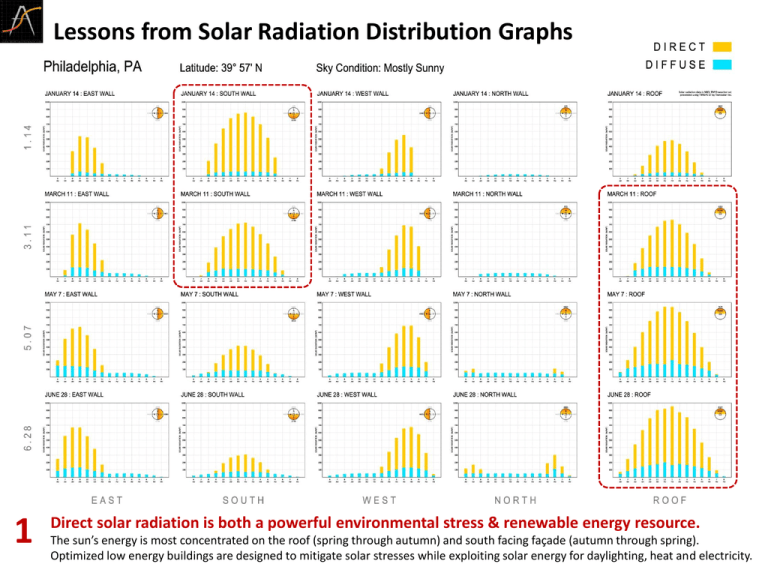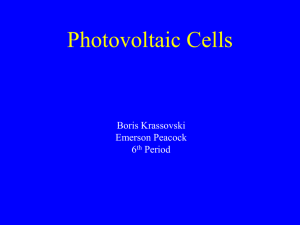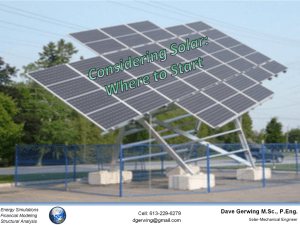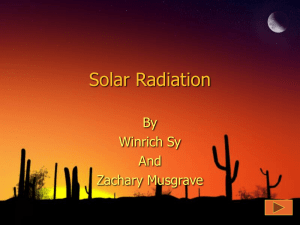Lessons from Solar Radiation Distribution Graphs
advertisement

Lessons from Solar Radiation Distribution Graphs 1 Direct solar radiation is both a powerful environmental stress & renewable energy resource. The sun’s energy is most concentrated on the roof (spring through autumn) and south facing façade (autumn through spring). Optimized low energy buildings are designed to mitigate solar stresses while exploiting solar energy for daylighting, heat and electricity. Lessons from Solar Radiation Distribution Graphs 2 Reducing the peak solar loads allows a reduction of the size & cost of the mechanical systems. Integrated Design can provide better building energy efficiency by redirecting some of the first cost of the mechanical systems to solar heat mitigating strategies like exterior sunshades, high-performance wall and window systems, and automated interior shading. Lessons from Solar Radiation Distribution Graphs 3 Optimize potential for solar energy harvesting on the roof. The roof is the best location for solar energy harvesting such as solar hot water and photovoltaic panel collectors. A green roof can be used to help mitigate the heat load in the summer as well as keep photovoltaic panels cooler thus increasing their efficiency. Lessons from Solar Radiation Distribution Graphs 4 Diffuse sunlight radiation on an overcast day can be stronger than on a sunny day. Clouds provide both a heat reflection and a light scattering effect. The resultant diffuse sunlight is an excellent source of daylighting because its luminous efficacy (lumens per watt of heat) is much better than direct sunlight. Lessons from Solar Radiation Distribution Graphs 5 Optimize the use of diffuse sunlight radiation for cool daylighting. Both the east and west facades can offer good opportunities for harvesting low-heat diffuse sunlight for a portion of the day. Automated shading can be utilized to help to ensure that the shades do not remain closed for the entire day.











